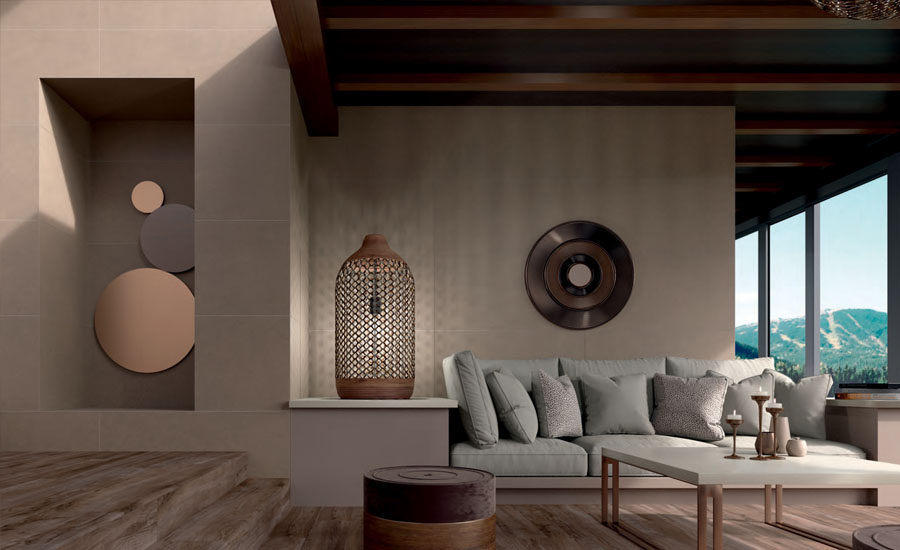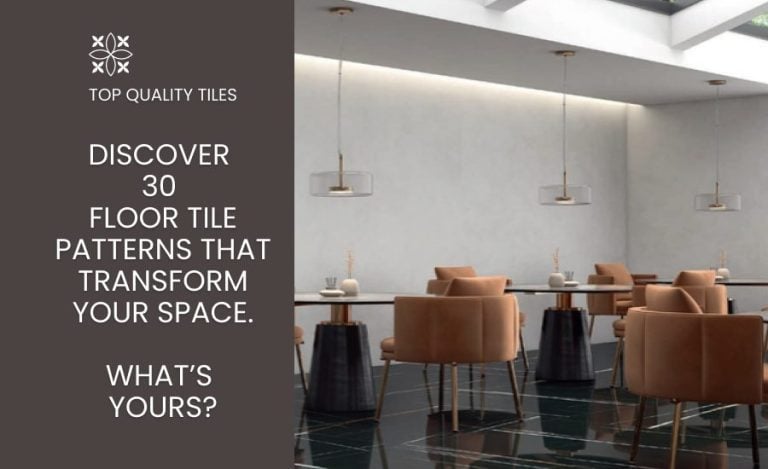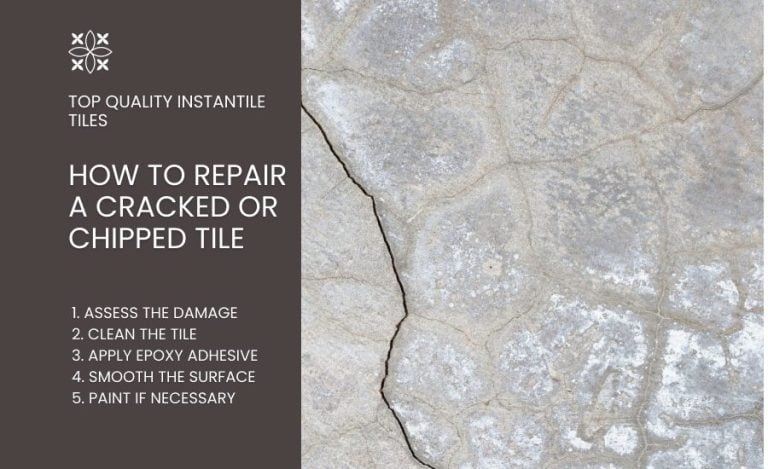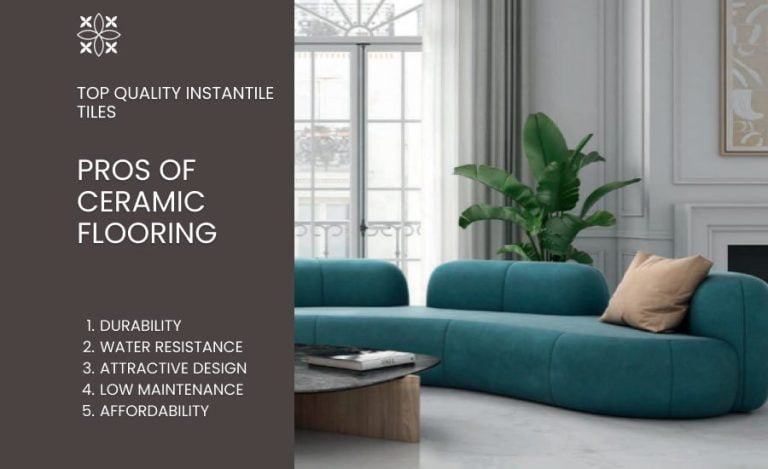Bamboo vs. Hardwood: Key Takeaways
- Bamboo flooring is crafted from real bamboo grass that’s cut, treated, and formed into planks
- Hardwood flooring is made from solid wood, sourced from trees like oak, maple, cherry, and walnut, or more exotic types like mahogany and teak
- Bamboo and hardwood flooring offer unique character, but wood-effect ceramic tiles provide a smarter alternative
If you’re in love with the warm, inviting hardwood floors at a friend’s house but also thinking of mimicking a cozy restaurant’s stunning bamboo flooring for your own space, you might be curious about the differences between bamboo and hardwood.
In this guide, we will:
- Break down the pros and cons of bamboo vs. hardwood
- Highlight what each flooring type brings to the table
- Explore a third flooring option that combines the best of both worlds
Bamboo vs. Hardwood: A Detailed Comparison
But which material should you use for your project: bamboo or hardwood?
Let’s compare the two.
Aesthetics
Bamboo flooring is available in various colors and finishes, including natural, darker, or stained to resemble the appearance of other woods.
Hardwood flooring comes in various colors and with different finishes, such as matte, satin, or glossy, offering a classic, chic look.
Durability
Bamboo, especially the strand-woven type, is wear-resistant but more prone to scratching and denting than hardwood.
Hardwood is extremely sturdy and can last for decades with proper care. Certain types like cherry or alder may be more easily scratched or damaged. In addition, hardwood can warp in humid environments.
Maintenance and Cleaning
All you need to clean a bamboo floor is a soft-bristle broom, microfiber dust mop, or vacuum cleaner. If your floor sees a lot of traffic, you may need to refinish or reseal it on a regular basis.
Hardwood is also simple to clean and maintain, but it may require periodic refinishing if it becomes dull due to daily foot traffic. Make sure to dry spills promptly to avoid staining or warping
Cost
Although high-quality bamboo might be costly, it is generally more affordable than hardwood flooring.
Hardwood is more expensive, with prices varying based on wood species, grade, and finish.
Sustainability
Bamboo is highly sustainable, as it grows quickly and can be harvested every few years with minimal environmental impact.
Hardwood flooring is less sustainable, as it involves cutting trees for production.
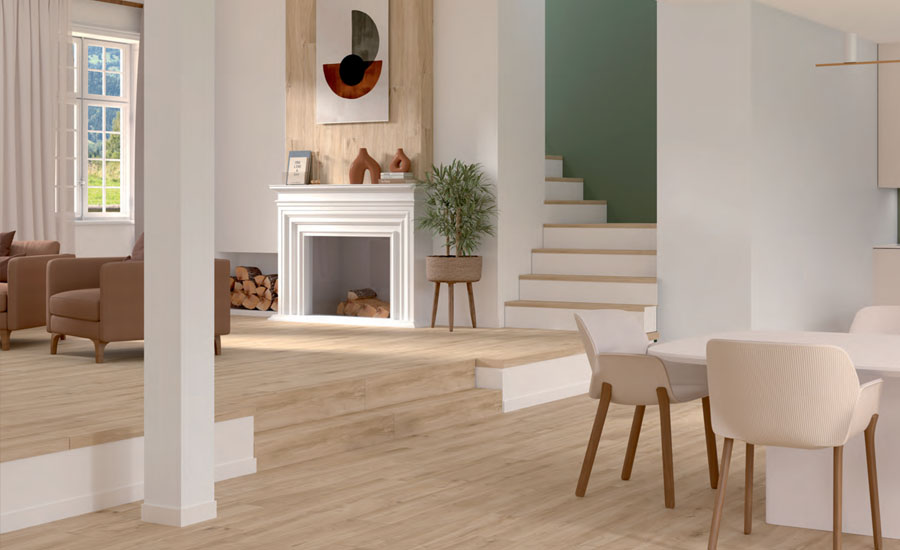
Getting To Know Bamboo Flooring
Bamboo flooring is made from genuine bamboo grass that is chopped, treated, and shaped into planks. There are various types of bamboo flooring such as:
- Horizontal bamboo flooring: Bamboo strips are glued together horizontally to reveal the bamboo’s natural “knots” or growth rings, giving it a traditional look.
- Vertical bamboo flooring: Bamboo pieces are glued vertically to give a more uniform and modern look.
- Strand-woven bamboo flooring: Bamboo fibers and resin are squeezed under high pressure to produce a dense and durable product that is typically harder than traditional hardwood.
Hardwood Flooring Explained
Hardwood flooring is made from solid wood sourced from trees such as oak, maple, cherry, and walnut, or more exotic types such as mahogany and teak.
After harvesting, the timber is cut into boards, dried, smoothed, and treated with a protective covering.
Common types include:
- Solid hardwood flooring: Each plank is made from a single piece of wood, ensuring durability and the capacity to be refinished several times.
- Engineered hardwood flooring: Layers of plywood or fiberboard are covered with a thin layer of hardwood, giving increased stability with a solid wood appearance.
Bamboo vs. Hardwood: Pros and Cons
To help you choose the best option for your indoor project, take a look at the pros and cons of bamboo and hardwood below.
Pros of Bamboo Flooring
- Provides a warm, modern look
- Eco-friendly
- More affordable than hardwood
- Resistant to moisture and humidity
Cons of Bamboo Flooring
- Prone to scratches in high-traffic areas
- Limited refinishing options
- Can vary in quality based on manufacturing
- Fewer style and color variations than hardwood
Pros of Hardwood Flooring
- Natural beauty with unique grain patterns
- Wide variety of wood species, colors, and finishes
- Can be refinished multiple times for a fresh look
- Durable, especially when made from harder wood species
- Increases the value of your home
Cons of Hardwood Flooring
- More expensive than bamboo
- Prone to scratches and dents
- Requires regular maintenance
- Can warp or swell in humid conditions
- Not as eco-friendly as bamboo
Ceramic Tiles: The Best of Bamboo and Hardwood
While bamboo and hardwood flooring have a unique feel and character, wood-effect ceramic tiles are a smarter alternative.
Here’s why they might be the smarter choice for your home:
- Authentic look: Wood-effect ceramic tiles beautifully replicate the organic texture and appearance of wood, transforming your space into a sophisticated living or gathering place.
- Wear-resistance: Unlike bamboo or hardwood, ceramic tiles resist scratches, dents, and moisture, so they can be used in high-traffic or wet areas without risk or concerns.
- Low maintenance: They’re incredibly easy to clean, allowing you time for more pleasant activities like playing with kids, walking your dog, or seeing more clients.
- Sustainability: Eco-friendly tiles are made from sustainable materials using processes that don’t harm the environment.
- Budget-friendly: Ceramic tiles allow you to enjoy the stunning look of wood without the high costs of hardwood or the maintenance concerns of bamboo.
If you’re looking for a flooring option that combines beauty, durability, and sustainability, wood-effect ceramic tiles, like the ones offered at Ceramista, are an excellent investment that can stand the test of time.
Check out our detailed comparison about tiles vs. wood flooring.
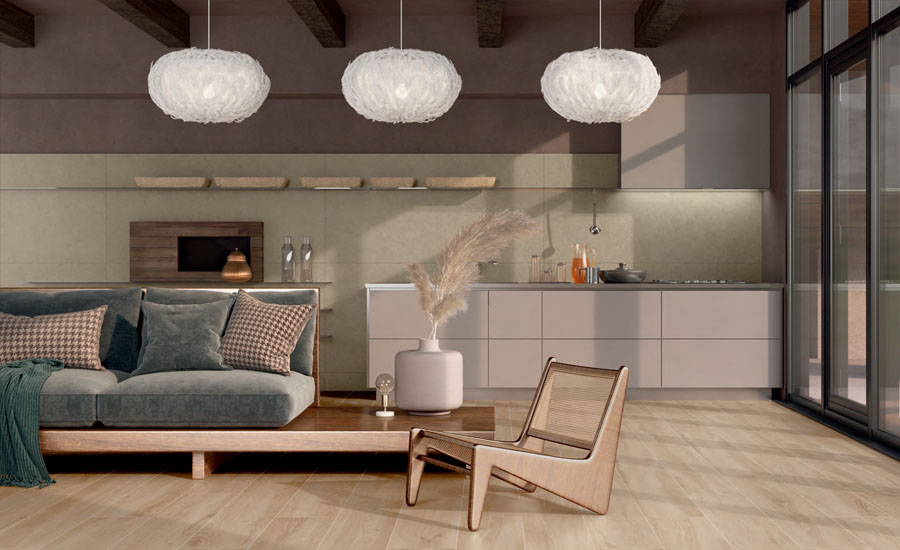
Shop Wood and Bamboo-Effect Tiles at Ceramista
Experience the natural elegance of wood and bamboo aesthetics—delivered with the durability and innovation of Ceramista tiles.
At Ceramista, we integrate advanced technology with timeless design to offer:
- The INSTANTILE interlocking system for installation up to 9x faster than traditional tiles
- Seamless tile replacement — remove and replace a single tile without disturbing the rest
- Minimal-tool installation with no adhesives, noise, or mess
- Significant cost and time savings thanks to simplified labor and faster project completion
- Authentic Spanish craftsmanship, combining beauty with reliability
- A wide range of wood-inspired finishes, from golden bamboo and warm oak to light maple and rich cherry tones
- Sustainably produced tiles, certified with ISO 14001, ISO 9001, Leadership in Energy and Environmental Design (LEED) and FloorScore®
Explore our catalogues and find the ideal tiles for your next residential or commercial project.
Bamboo vs. Hardwood: FAQs
Are you still struggling to decide between bamboo, hardwood, and ceramic tiles? For additional information on the ideal flooring, see the section below.
Is bamboo better than hardwood for damp environments?
Bamboo and hardwood are not recommended for damp locations. Instead, choose ceramic tiles that offer water resistance and the look you want.
Are ceramic tiles better than bamboo or hardwood?
Yes, ceramic tiles have the same cozy look but are easier to maintain and more resilient.
Which flooring adds more value between bamboo, hardwood, and tiles?
Hardwood is seen as an expensive material so it can greatly increase resale value. However, tiles provide long-term functionality and aesthetic appeal, making them a preferred choice for homes with kids and pets or spaces used by a lot of people.
Where can I find the best wood- or bamboo-effect tiles?
At Ceramista, of course! Explore our collections to find the designs that will suit best your home or commercial space.
Do wood-effect ceramic tiles look realistic?
Yes, Ceramista’s tiles are produced with advanced printing technology that makes them nearly indistinguishable from real wood or bamboo.
Can bamboo or hardwood fade when exposed to sunlight?
Both bamboo and hardwood can lose their initial color when exposed to the sun. Ceramic tiles are resistant to fading and will delight you for years to come.
Do ceramic tiles feel cold underfoot compared to bamboo and hardwood?
Ceramic tiles can feel colder, especially in cooler climates. However, this can be solved by using radiant heating or rugs.
How do I choose the best flooring for my project?
To choose the best flooring for your home or commercial space, consider your lifestyle, budget, and design preferences.
You can find valuable information on different tile options in our in-depth guides covering:
